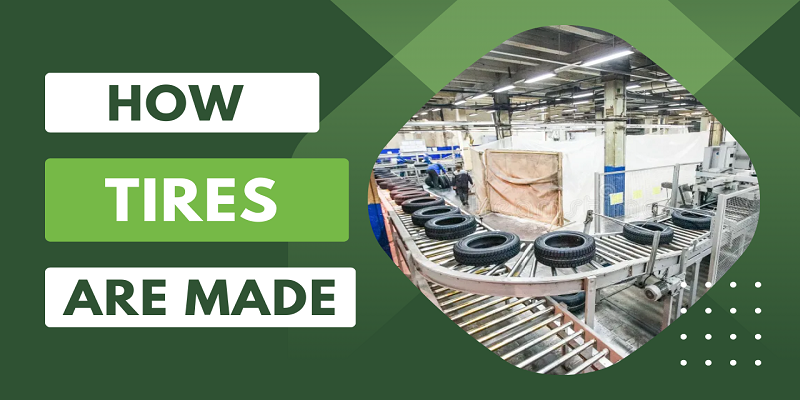Introduction
Tires are an essential component of the modern world, connecting our vehicles to the road and ensuring our safety and comfort during every journey. While we often take them for granted, the process of how are tires made is a complex and fascinating one. In this article, we will explore the journey of how tires are made, from the raw materials to the final product that propels us down the open road. Let’s dive into the world of rubber, steel, and craftsmanship.
Raw Materials
The journey of a tire begins with raw materials carefully selected for their durability and performance. The primary component is natural and synthetic rubber. Natural rubber is extracted from rubber trees, while synthetic rubber is derived from petrochemicals. These materials are blended to create the rubber compound that forms the tire’s tread and sidewalls.
Additionally, reinforcing materials such as polyester, nylon, and steel are used to enhance the tire’s strength and stability. High-quality tires often incorporate multiple layers of these materials for added durability and performance.
Tire Components
Tires are composed of several key components:
- Tread: The tread is the part of the tire that makes direct contact with the road. It’s designed with specific patterns and grooves to provide traction and grip on various surfaces.
- Sidewalls: The sidewalls are the sides of the tire and provide flexibility and support. They often contain important information, such as the tire’s size and specifications.
- Bead: The bead is the inner edge of the tire that connects it to the wheel. It’s usually reinforced with steel wires for stability.
- Belt Package: Located beneath the tread, the belt package consists of steel belts that provide strength and stability to the tire.
- Inner Liner: The inner liner is a layer of rubber designed to keep the air inside the tire and prevent it from escaping.
Tire Manufacturing Process
The process of making a tire is highly precise and involves a series of steps:
- Preparing the Materials: The rubber compound is created by mixing various ingredients, including natural and synthetic rubber, reinforcing materials, and chemicals. This compound is then rolled into sheets and cut into the desired components.
- Building the Tire: The tire-building machine is used to layer the components onto a drum, starting with the inner liner and building up to the tread. Each layer is precisely placed to ensure uniformity and balance.
- Curing: The green tire is placed into a curing mold, which is heated to the appropriate temperature and pressure. This process vulcanizes the rubber, giving the tire its final shape and strength.
- Inspection and Testing: Every tire undergoes a series of inspections and tests to ensure its quality and safety. These tests include uniformity checks, X-rays, and a balance assessment.
- Final Inspection: Before being released for sale, tires are subjected to a final visual inspection to identify any cosmetic defects.
You can also find Tire Manufacturing Process on Wikipedia.
Quality Control
Tire manufacturing involves stringent quality control measures to ensure the safety and performance of the final product. Quality control processes are integrated into every step, from material selection to the final inspection. These processes include X-ray inspections to identify hidden defects, uniformity checks to ensure even thickness, and balance assessments to eliminate vibrations. The tire industry invests heavily in research and development to continuously improve the quality and safety of their products.
Environmental Concerns
Tire manufacturing can have an environmental impact, primarily due to the raw materials used and energy consumption during production. However, the industry has made significant strides in reducing its environmental footprint. Sustainable practices, such as recycling and reusing materials, have become more common. Additionally, advancements in tire technology have led to the development of eco-friendly tires designed to improve fuel efficiency and reduce carbon emissions.
Conclusion
The journey of how tires are made is a testament to the blend of science, engineering, and craftsmanship. From the selection of raw materials to the precision of manufacturing and quality control, the tire industry continuously strives for excellence. Tires play a pivotal role in the safety and performance of our vehicles, and their production has come a long way in terms of environmental sustainability. So, the next time you hit the open road, remember the intricate process that goes into creating the rubber beneath you, ensuring a smooth and safe journey.

